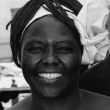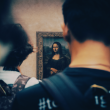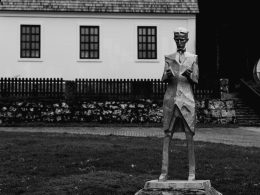Table of Contents Show
I. The Making of a Revolutionary: Early Life in the Transkei
Nelson Rolihlahla Mandela was born on July 18, 1918, in the small village of Mvezo, nestled in the rolling hills of the Transkei, a region that was then part of the British Empire’s dominion over South Africa. His father, Gadla Henry Mphakanyiswa, was a chief by blood and a counselor to the Thembu royal family, giving Mandela a connection to the traditional leadership that governed the Xhosa people. His mother, Nosekeni Fanny, was one of Gadla’s wives, and it was through her care that Mandela’s early life was shaped by the values of respect, duty, and service to the community.
Mandela’s childhood was steeped in the traditions of his people. He listened to the elders as they spoke of the histories of the Xhosa, tales of bravery, resistance, and the fight to maintain their lands against colonial encroachment. This oral history, passed down through generations, planted in Mandela a deep sense of identity and a connection to the broader African struggle against oppression.
At the age of nine, Mandela’s life changed dramatically when his father died. His mother took him to live with Chief Jongintaba Dalindyebo, the acting regent of the Thembu people. This move to the Great Place in Mqhekezweni was pivotal, for it was here that Mandela was exposed to the intricacies of leadership, governance, and the responsibilities that came with power. The regent treated Mandela as his own son, grooming him for a leadership role within the Thembu tribe.
Mandela’s education began in earnest at this time. He attended a local mission school where he was given the English name “Nelson” by his teacher, a common practice in colonial schools aimed at anglicizing African children. He later went on to attend Clarkebury Boarding Institute and Healdtown, both prestigious institutions for black South Africans, where he excelled academically and was introduced to the broader world beyond his village.
It was during his time at these schools that Mandela began to chafe against the racial injustices that were ingrained in South African society. The seeds of his political consciousness were sown as he witnessed the daily indignities suffered by his people under the yoke of white rule. These experiences, combined with his traditional upbringing, would forge the ideals that would guide him for the rest of his life.
II. The Awakening: Johannesburg and the ANC
In 1941, at the age of 23, Nelson Mandela fled to Johannesburg to escape an arranged marriage that had been orchestrated by the regent. Johannesburg was a city of stark contrasts, a booming metropolis built on the wealth of its gold mines, yet also a place of profound inequality, where the black majority lived in squalor, segregated from the white minority who controlled the levers of power.
In Johannesburg, Mandela found work as a night watchman and later as a clerk at a law firm, where he was mentored by Walter Sisulu, a prominent member of the African National Congress (ANC). Sisulu introduced Mandela to the politics of resistance, and it was through him that Mandela became involved with the ANC, an organization dedicated to fighting for the rights of black South Africans. The ANC, founded in 1912, had long been advocating for the political and social rights of the African population, but by the 1940s, it was becoming clear that more militant action was needed.
Mandela’s political awakening was swift and profound. He enrolled at the University of Witwatersrand to study law, becoming one of the few black students at the predominantly white institution. It was there that he forged alliances with people from all walks of life, and his exposure to Marxist and socialist ideas broadened his understanding of the struggle against apartheid. He became deeply involved in the ANC Youth League, which he helped to found in 1944, advocating for a more radical approach to the liberation struggle.
In 1948, the National Party came to power in South Africa, implementing the formal system of apartheid—a rigid racial segregation that codified the subjugation of the black majority. For Mandela, the time for passive resistance was over. Alongside Sisulu, Oliver Tambo, and other key figures in the ANC, Mandela began to organize mass protests, strikes, and acts of civil disobedience against the apartheid regime.
The Defiance Campaign of 1952 marked a turning point in Mandela’s life. He emerged as one of the leading voices in the struggle, advocating for nonviolent resistance modeled after the tactics of Mahatma Gandhi. Mandela traveled the country, rallying support and organizing resistance, and it was during this time that he gained a reputation as a charismatic leader and a symbol of the fight against apartheid. But as the government cracked down on the protests with increasing brutality, Mandela began to question whether nonviolence alone would be enough to dismantle the system.
III. The Spear of the Nation: Embracing Armed Struggle
By the early 1960s, Nelson Mandela had come to a grim conclusion: the apartheid regime could not be defeated through peaceful means alone. The government’s response to the ANC’s peaceful protests had been to outlaw the organization, arrest its leaders, and violently suppress any form of dissent. The massacre at Sharpeville in 1960, where 69 unarmed protesters were killed by police, was a watershed moment that convinced Mandela and others that they needed to adopt a new strategy.
In 1961, Mandela co-founded Umkhonto we Sizwe (MK), or “Spear of the Nation,” the armed wing of the ANC. The decision to embrace armed struggle was not taken lightly, but Mandela and his comrades felt that they had no other choice. MK’s mission was to carry out sabotage against government installations, infrastructure, and symbols of apartheid, with the aim of forcing the regime to negotiate. Mandela became the organization’s first commander-in-chief, a role that marked him as an enemy of the state.
Mandela’s involvement in MK led him to go underground, adopting the alias “David Motsamayi” and moving between safe houses to evade capture. He traveled across Africa and to London, seeking support for the ANC’s cause and undergoing military training. However, his time as a fugitive was short-lived. In 1962, Mandela was captured by the South African police, leading to what would become one of the most famous trials in history.
At the Rivonia Trial in 1964, Mandela and several of his comrades were charged with sabotage and conspiracy to overthrow the government. Facing the death penalty, Mandela used the trial as a platform to make a powerful statement against apartheid. In a speech that would resonate around the world, he declared, “I have cherished the ideal of a democratic and free society in which all persons live together in harmony and with equal opportunities. It is an ideal which I hope to live for and to achieve. But if needs be, it is an ideal for which I am prepared to die.”
Mandela and his co-defendants were sentenced to life imprisonment, and he was sent to Robben Island, a maximum-security prison off the coast of Cape Town. For the next 27 years, Mandela would be incarcerated, but his spirit remained unbroken. From his prison cell, he became a global symbol of resistance to apartheid, his name synonymous with the struggle for freedom in South Africa.
IV. Prisoner to President: The Long Road to Freedom
Nelson Mandela’s years in prison were marked by hardship, but they were also a time of reflection, education, and continued resistance. Robben Island was intended to break the spirits of its inmates, but for Mandela, it became a place of transformation. He and his fellow prisoners, many of whom were also leaders of the ANC, turned the prison into a “university behind bars,” educating themselves and one another in history, politics, and the law. Mandela himself continued his studies, earning a law degree through correspondence.
Despite the isolation, Mandela remained deeply engaged with the outside world. He maintained contact with the ANC leadership in exile and clandestinely communicated with his supporters. His stature grew even as he was physically confined, and the global campaign to free Nelson Mandela became a rallying cry for anti-apartheid activists worldwide.
By the 1980s, the apartheid regime was under increasing pressure both domestically and internationally. South Africa was becoming a pariah state, facing economic sanctions, divestment campaigns, and growing internal unrest. The government, led by President P.W. Botha, recognized that it could not maintain its hold on power indefinitely but was reluctant to relinquish control. In this context, Mandela’s release became a critical point of negotiation.
In 1985, Botha offered Mandela his freedom in exchange for renouncing violence, but Mandela refused, insisting that any negotiations must include the ANC and the broader anti-apartheid movement. It was a principled stand that underscored Mandela’s commitment to collective leadership and his belief that freedom could not be compromised. The years that followed saw secret negotiations between Mandela and government officials, laying the groundwork for what would become the end of apartheid.
On February 11, 1990, after 27 years in prison, Nelson Mandela walked out of Victor Verster Prison a free man. His release was met with jubilation across South Africa and the world, but the road ahead was fraught with challenges. Mandela immediately set to work negotiating a peaceful transition from apartheid to democracy, a process that required patience, diplomacy, and an unwavering commitment to reconciliation.
In 1994, South Africa held its first multiracial elections, and Nelson Mandela was elected as the country’s first black president. His inauguration marked the culmination of a lifelong struggle, but it also signaled the beginning of a new and daunting task: healing a nation divided by centuries of racial injustice.







